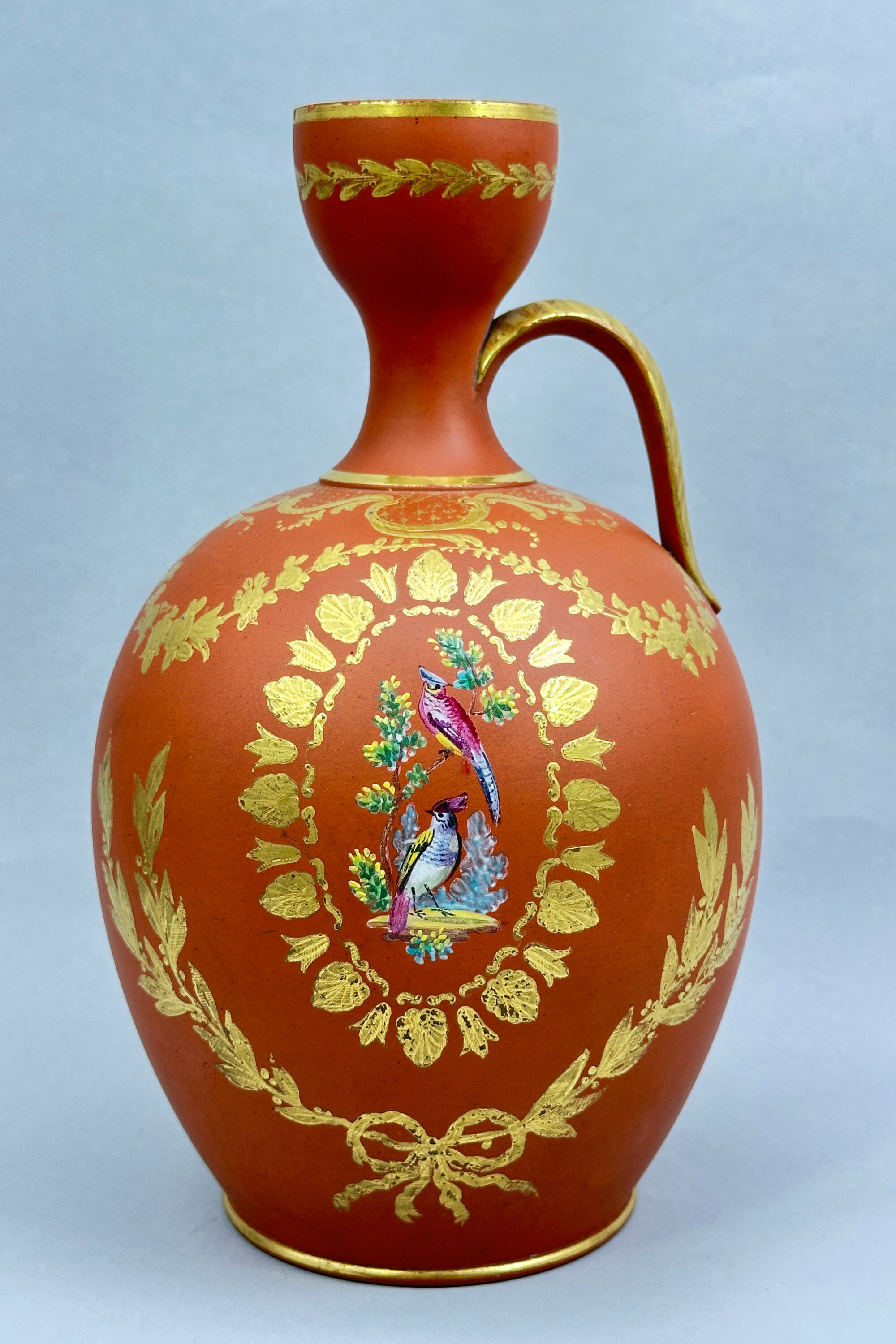Watcombe Pottery Terracotta Ewer circa 1900
| Current Bid: | £20.00 |
| Bid Increment: | £2.00 |
| Next Min Bid: | £22.00 |
| Buyer’s Premium: | £4.80 |
| Total Amount: | £24.80 |
| Number of Bids: | 4 |
| Location: | United Kingdom |
| Highest Bidder: | User 1412 |
| Auction Start: | 24/04/24 10:03:00 UTC |
| Auction Ending: | 08/05/24 19:26:00 UTC |
| Auction Finished : | 08/05/24 19:26:05 UTC |
Watcombe Pottery Terracotta Ewer circa 1900
A terracotta ewer, the body of broad ovoid form rising to a narrow concave neck with a cup shaped rim, the shoulder with a simple loop handle, decorated with two panels in polychrome enamels (birds and flowers/flowers) with elaborate gilt floral borders surrounded by gilt floral wreaths tied at the base, the base plain.‘Terracotta’, literally any kind of fired clay (the term translates as ‘cooked earth’) usually refers to ceramic objects made from fairly coarse, porous clay which, when fired, assumes a colour ranging from dull ochre to red and usually is left unglazed. Terracotta wares are the staple of ceramics production generally but this particular vase seems to date to around 1900 and was made in England by the Watcombe pottery based in Devon. Pieces combining unglazed or glazed terracotta with polychrome enameling were one of the designs produced by them.
Production commenced in the mid 1860s when a fine red Devon clay was discovered in the grounds of Watcombe House near Torquay, prompting its then owner G. P. Allen to establish the Watcombe Terracotta Clay Company off Teignmouth Road, St. Marychurch in 1869. Classical styles of the period like terracotta busts, figures, urns and jugs were produced first, followed by decorated terracotta pieces, some in the style of the famous designer Christopher Dresser and some looking towards Greek and Roman shapes. Not all of the pieces were marked and the appearance of ‘Watcombe Porcelain’ on some of their wares seems to post date the first years of production. Various mergers followed and the range of designs developed, adapting to changing tastes, but finally the business was forced to close its doors in 1962.
This piece is an elegant example of their work, combining the simplicity of a Classical derived form with elaborate decoration to suit Victorian taste. The quality of the decoration is self evident and the combination of styles extremely pleasing – decorative ceramics at their best.
| Size: | Ht 23cm Width (max) 15cm Base 9cm |
| Weight: | 840 gm |
| Date: | 1900 |
| Condition: | Excellent condition with no damage or restoration |
| Estimate: | £30 – 40 |














